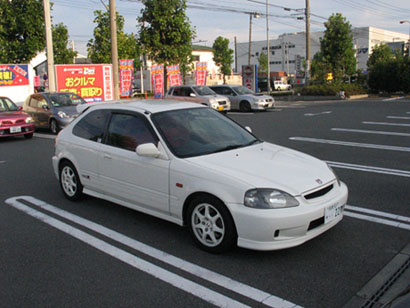hahaha,ya,Alrizki Marino. dia adalah salah satu anak muda yang suka sekali dengan mobil dan menganggap mobil sebagai "passion" dalam hidup dia.
well,ceritanya begini. saya mempunyai teman bernama Zendeedo. dia meminta tolong kepada Rino (gue manggil dia Rino) untuk mengajarinya nyetir,dan akhirnya diapun mau mengajari Deedo nyetir. pada saat itu,saya dikasih tau Deedo bahwa yang ngajarin dia nyetir adalah Rino dan dia nawarin gue buat ketemu juga sama Rino,dan seketika gue langsung seneng. dipastikan akhirnya gue akan ketemu sama Rino pada hari sabtu,di bulan oktober lalu,tapi lupa tanggal berapa.
ketika hari jum'atnya. gue dikasih tau sama temen gue,anggoro,ketua perkumpulan bioskop 28 gue. dia kasih tau bahwa hari sabtu akan ada kegiatan mengsupervisikan SMA 66. seketika langsung gue ijin untuk tidak ikut,karena gue udah bikin janji duluan sama Deedo dan juga Rino (kalau Rino lewat FB).
pada hari H,gue langsung pergi ketempat si Deedo akan latihan dengan Rino,yaitu di citos. well,mereka bilang mereka akan latihan jam 9,jadi gue juga dateng kesana pagi.
gue tunggu lama bener..dari jam 8 gue nunggu,sampe jam 10. ternyata pas gue telefon jam 9,deedo bilang bahwa dia baru bangun dan tidurnya dia jam 5. ckckckc,kehidupan anak remaja
seketika tadinya gue berpikir untuk mendatangi apartemen Rino,akan tetapi Rino bilang tidak usah. karena ternyata mereka lagi dirumah temen mereka dan mereka akan balik ke apartemen nantinya untuk mandi lalu berangkat lagi. tadinya gue ada perasaan bingung kenapa ga boleh,tapi dalam hati gue bilang "mungkin memang gue seharusnya ga usah kesana,buang buang tenaga dan juga jadi kesannya tidak sopan" lalu gue menunggu mereka. selama menunggu,gue membaca cerita karya temen gue atau partner gue,gita (thanks,git) lalu dengan meminum segelas teh hangat di kafe dekat kolam renang citos
ketika Deedo sudah sampai dengan Rino,Deedo memberitahukan posisi mereka dan langsunglah kita ketemuan. dan ternyata,ada satu orang lagi,namanya tito,ya,tito pratikto. dia seumuran sama gue,16 tahun,bersekolah di Al Izhar akan tetapi dia tak terlalu memikirkan pelajaran,jadi pada saat itu gue mencoba tidak membicarakan pelajaran sama sekali dengan tito. si tito kaget karena gue dari SMAN 28,gue bingung kenapa dia kaget dan ketika gue tanya bahwa dia tau SMAN 28 atau tidak ternyata dia tau (syukurlah,banyak yg ga tau juga tuh sekolah 28 ==") dan dia juga tau bahwa hari itu ada world science day di 28,wah salut gue sama tito bisa tau seperti itu.
ketika bertemu,kami langsung ke parkiran dan untuk pertama kalinya gue melihat GX71 milik Rino GX71 adalah nama seri dari toyota Cressida,seperti ini fotonya GX71 milik Rino

setelah itu,kami pergi ke PIM karena Rino ada urusan. ketika sampai di basement PIM 2,rino melakukan sebuah drifting..ya DRIFTING di basement PIM 2,ckckckc. sampai mobil dibelakang sempat agak kaget. dan pada saat rino tancap gas,banyak mobil yang sensor bunyinya pada nyala (karena resonansi suara meisn Rino yang bising,HAHAHAH) well,bising tapi bertenaga mesinnya!
setelah dari PIM,kami menuju citos lagi,dan Rino melewati perumahan untuk kembali ke citos. didalam perumaha,ia melakukan drifting lagi,dan disitu saya senang sekali.
well,ternyata. alasan rino dan deedo bangun siang itu adalah,mereka malam harinya drifting di daerah puteran PIM. kurang lebih seperti dibawah ini
dan ini adalah video driftingnya rino di tempat tersebut,check it out!
saya ambil dari blognya dia AM auto blogspot
well,motto dia adalah"keisengan dapat membawamu ketempat yang lebih tinggi,so jangan remehkan efek dari keisengan" kurang lebih gitu dan satu lagi "i don't need a traction" wew XD
well,sekian dulu untuk teman saya,alrizki marino!




